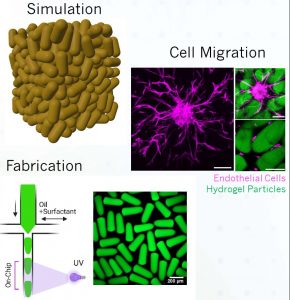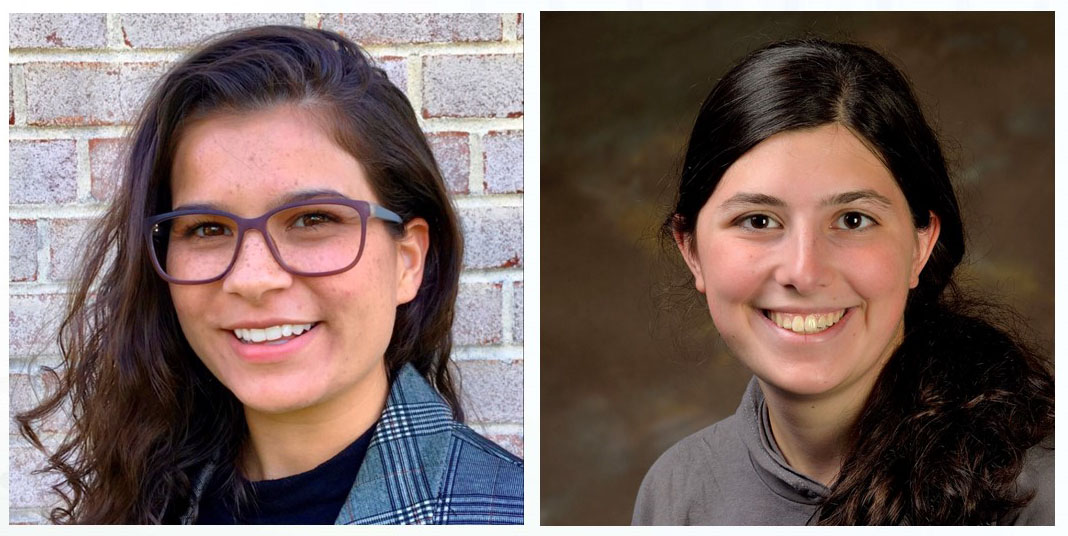 Granular hydrogels are soft, hydrated materials that are formed through the assembly of microparticles. They can be processed through injection and 3D printing into structures of use for biomedical applications.
Granular hydrogels are soft, hydrated materials that are formed through the assembly of microparticles. They can be processed through injection and 3D printing into structures of use for biomedical applications.
In this study, we investigated the influence of particle shape on the properties of these hydrogels, including their mechanics, porosity, and ability to support cellular infiltration.
With elongated or “rod-shaped” particles generated with microfluidics, we observed an overall increase in cell invasion compared to ”sphere-shaped” particles. This is likely due to changes in both the material packing and pore shape that provides a path of least resistance for cells to migrate. Such findings will be helpful in the application of these materials across fields, including biomedical.
Authors on this work include Victoria Muir (a URM PhD student in the Burdick group) and Shoshana Weintraub (an undergraduate MSE student at Penn). The work was also collaborative across two IRGs between Burdick and Lee.

